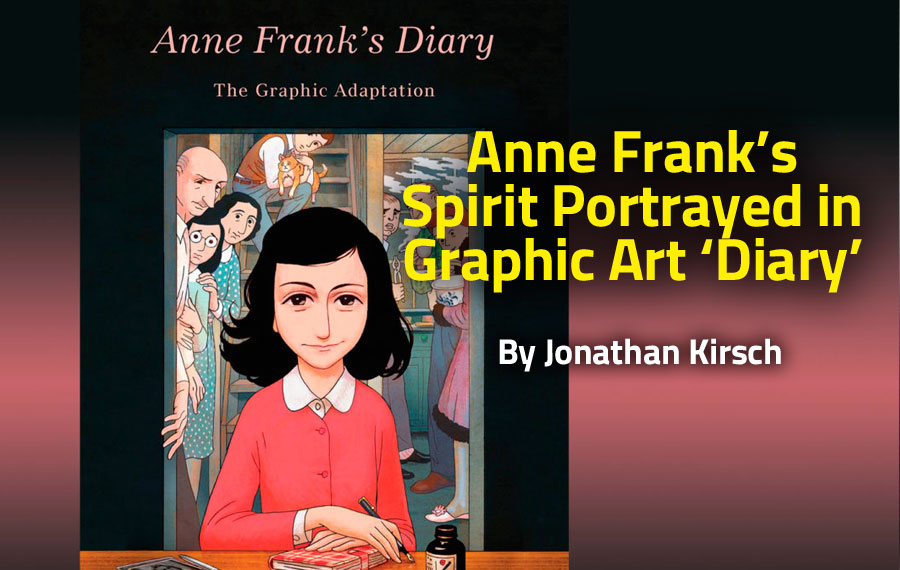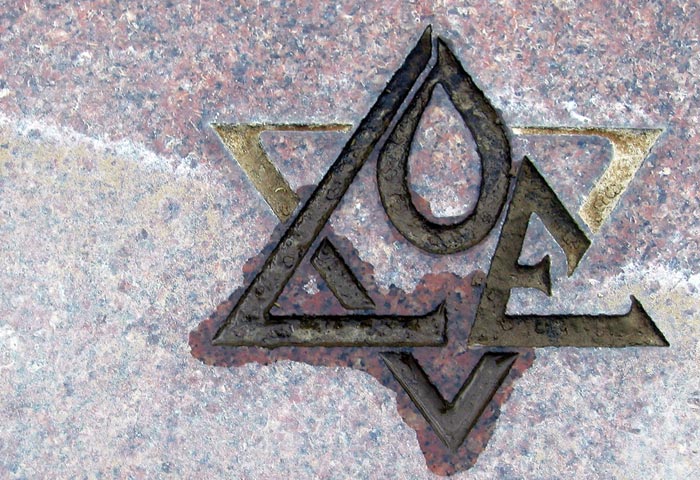
Since the 1991 publication of Art Spiegelman’s groundbreaking “Maus,” to put a new spin on Theodor Adorno’s cautionary aphorism, it is no longer barbaric to write about the Holocaust in a comic book. The latest example of the genre is “Anne Frank’s Diary: The Graphic Adaptation,” adapted from the original text by Ari Folman and illustrated by David Polonsky (Pantheon). Not unlike “Maus,” the graphic version of “The Diary of a Young Girl” is both a challenge and a wonderment.
Indeed, I picked up the book with some trepidation. How could Anne Frank’s firsthand testimony be rendered in drawings and dialogue balloons without cheapening and distorting the work she created as a doomed youngster in hiding? But by the time I put it down, I was filled with admiration for what Folman and Polonsky have accomplished. Their “graphic edition” serves as a companion volume to — and, really, a midrash on — Anne Frank’s immortal memoir, and the book stands on its own as a work of art, sometimes disturbing but always illuminating.
Ari Folman is the director of the Oscar-nominated animated documentary film “Waltz With Bashir” and a screenwriter for the Israeli TV series called “Be Tipul” (“In Therapy”), which served as the basis for the HBO series “In Treatment.” David Polonsky, an award-winning illustrator of children’s books and a member of the faculty of Bezalel Academy of Arts and Design in Israel, was the art director and lead artist for “Waltz With Bashir.” Significantly, and despite the audacity of their undertaking, “Anne Frank’s Diary” is authorized by the Anne Frank Foundation in Basel, which gave its official blessing to this audacious re-imagination.
The project actually originated with the Anne Frank Foundation, which approached Folman with the proposal for an animated feature film based on Anne’s diary. The book, in a sense, is a preview of the feature film, which is scheduled for completion in 2020. Both projects, Folman reveals, were daunting: “It was astounding to me that a thirteen-year-old girl had been able to take such a mature, lyrical look at the world and translate that into concise, probing entries brimming with compassion and humor, and with a degree of self-awareness that I have rarely encountered in the adult world, much less among children,” he writes in an “Adapter’s Note.” “How could I ‘edit’ the book?” Page by page, his graphic edition shows us exactly how the adapter and the illustrator approached and mastered the challenge.
“Folman and Polonsky have reclaimed Anne Frank in all of her humanity, and they allow us to witness for ourselves her beauty, courage, vision and imagination.”
Quite unlike “Maus,” Polonsky’s drawings are literal rather than fanciful. To be sure, they recall the classic era of the American comic book, when artists simplified and stylized their images in order to heighten the tension, drama and action but also sought to depict people and events as somehow hyper-realistic. The eye-stopping two-page spread that shows the downing of an Allied warplane over a public square in Amsterdam is a tribute to the World War II-themed comic books that I favored in my own adolescence. (“Brrr, I hate the sound of gunfire,” Anne writes.) At times, I was reminded of the rich illustration style that the Belgian illustrator known as Hergé brought to his the Tintin series.
The text itself is drawn mostly from the original diary, some passages of which may come as a surprise for readers who first encountered the book many years ago. Only rarely does Folman invent the words that appear in a dialogue balloon into Polonsky’s illustrations. To illustrate what Anne may have been thinking the memorable night when she and Peter shared their first kiss, for example, he inserts a joke: “So, is he going to make a move before the war ends … ?” A moment later, drawing on a passage in the diary, we see Anne and Peter embracing after their first kiss, and Folman includes two figures of Anne, one silencing the other with an outstretched hand.
“I realized, for the first time, that there is not only one Anne Frank, but, surprisingly, two Anne Franks,” she muses.
“[S]uddenly the everyday Anne slipped away and the second Anne took her place. The second Anne, who’s never overconfident or amusing, but wants only to love and be loved.”
One example of the interplay between Anne’s private thoughts and the soaring imagination of Folman and Polonsky is the page based on her diary entry for Wednesday, Feb. 23, 1944. “This morning, when I was sitting on front of the window and taking a long, deep look outside at God and nature, I was happy, just plain happy,” she wrote in an entry addressed to Peter, the boy who sheltered with the Frank family and her first (and only) love. “Riches, prestige, everything can be lost. But the happiness in our own heart can be dimmed: it will always be there, as long as you live, to make you happy again.” To illustrate these deeply ironic sentiments, we are shown what Anne sees through the window — a pair of seagulls in flight — and what Anne surely imagined and hoped for, the two of them, Anne and Peter, soaring aloft with outstretched arms, a scene so poignant that it brings a lump to the throat.
At certain moments, the imagination of the adapter and the illustrator supply images to accompany the more abstract musings that we find in the diary itself. She is depicted as the figure in Munch’s “The Scream” or as “The Lady in Gold” in Klimt’s famous painting of Adele Bloch-Bauer. When Anne writes about her bouts of depression and despair, “we chose to depict them as either fantastical scenes … or as dreams,” Folman writes. Thus, for example, her worst fears of what would happen if they fell into German hands is depicted as a detailed Egyptian hieroglyphic with an SS guard overseeing the labor of Jews in concentration-camp uniforms as they erect a pyramid-sized ziggurat topped with a Nazi eagle.
Since the discovery and publication of “The Diary of Anne Frank,” the young girl who wrote the diary has been transformed from a flesh-and-blood victim of Nazi brutality into a shimmering icon. Famously, she was even turned into an object of veneration by a cult in Japan. To their credit, Folman and Polonsky have reclaimed Anne Frank in all of her humanity, and they allow us to witness for ourselves her beauty, courage, vision and imagination, all of the qualities that make her life and early death so heartbreaking. And, in doing so, they have elevated the tools of the comic book to create an astonishing work of art.
Jonathan Kirsch, author and publishing attorney, is the book editor of the Jewish
Journal.























 More news and opinions than at a Shabbat dinner, right in your inbox.
More news and opinions than at a Shabbat dinner, right in your inbox.